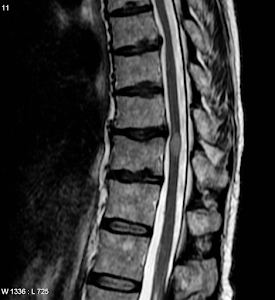Decoding Nothnagel Syndrome: Navigating the Mysteries of Rare Neurological Disorder
Nothnagel Syndrome
The clinical characteristics of malignancies involving the quadrigeminal bodies were outlined by Austrian physician Nothnagel in his monograph, Localization of Diseases of the Brain (1879). He limited his talk to neoplasms since he believed they were more specific to this area than cerebrovascular infarctions.
Hermann Nothnagel presented a 2 year old child who had dilated pupils, significant gait ataxia, and a vague bilateral ophthalmoparesis. After an autopsy, it was discovered that the patient had hydrocephalus and a sarcoma that had invaded all 4 colliculi, the pineal gland, and the cerebellum dorsally. Nothnagel came to several conclusions following a through examination of the literature 1) tumors involving the inferior colliculi can cause bilateral oculomotor paralysis of varying degrees in each eye, and 2) lesions of the superior colliculi may be linked to abnormal pupillary responses and visual loss without papilledema or optic atrophy.
In reviewing his cases, Nothnagel used terms such as staggering, tumbling, reeling, and stumbling to describe the unsteadiness of gait (also known as "ataxy"), which predated the terms staggerer, tumbler, reeler, and stumbler being adopted to refer to mutant mice identified in the latter half of the twentieth century and used in classical cerebellar research.
Upon autopsy, the 1889 case report revealed a tumor with papillomatous epithelial characteristics in the quadrigeminal area. The tumor protruded into the fourth ventricle and compressed the cerebellum and its cerebellar peduncles posteriorly. He asked whether the involvement of adjacent contiguous structures, like the "vermiform process" (vermis), or lesions of the quadrigeminal bodies (tectum mesencephali) was the cause of the "ataxy." Nothnagel explained abnormalities in eye movements as either a direct invasion by a tumor of the oculomotor nerve nuclei on both sides or as compression.
According to recent research, a dorsal midbrain anomaly involving or close to the superior cerebellar peduncles' decussation, which impairs cerebellar eferents to the thalamus, is the cause of the gait ataxia observed in Nothnagel syndrome. Lesions of the dorsal midbrain tegmentum.
Hemorrhagic stroke and malignancies can also cause Nothnagel syndrome. In the Japanese literature, more cases were documented between the 1970s and 1990s.
In a related context, “Claude syndrome” results from brainstem stroke and is characterized by ipsilateral oculomotor nerve paralysis and contralateral ataxia and hemiparesis. It affects the oculomotor nerve, the red nucleus, and the superior cerebellar peduncle.
Etiology
- Often results from compression eg. by pinealomas
- Affected vessels like branches of posterior cerebral artery
Structures Affected
- Superior colliculi
- Superior cerebellar peduncles
Patient Presentation
- Ipsilateral or bilateral oculomotor nerve palsy - Only lateral rectus is active causing the eye to deviate laterally.
- Ipsilateral cerebellar ataxia
Anatomy of Mid Brain
There are two sections of mid brain one at the level of Superior colliculus and another at the level of the Inferior colliculus.
At the level of Superior Colliculus:
1. Structures
- Red nucleus
- Decussation of rubrospinal tracts
- Occulumotor nerve nucleus
- Superior colliculus
- Mesenchephalic nucleus
- Trigeminal leminiscus
- Spinal leminiscus
- Medial leminiscus
- Medial Longitudinal Fasiculus
- Temporopontine Fibers
- Corticospinal and Corticonucleur Fibers
- Frontopontine Fibers
Signs and Symptoms due to the structures affected:
- Lesions of the red nucleus usually result in contralateral tremor, ataxia, or choreiform movements. The fiber tract is a component of the Guillain–Mollaret triangle and passes in the immediate vicinity of the red nucleus.
- The rubrospinal tract projects to nuclei in the brain stem and cerebellum before reaching the spinal cord. The most important function of the rubrospinal tract is the control of muscle tone in flexor muscle groups.
- Occulumotor nerve supplies all the extraocular muscles except lateral rectus and superior oblique.
- Optic radiations pass through the superior colliculus
- The mesencephalic trigeminal nucleus innervates muscle spindles and is responsible for receiving and transmitting proprioception from the oro-facial region.
1. Structures
- Nucleus of trochlear nerve
- Medial longitudinal fasciculus
- Inferior colliculus
- Lateral lemniscus
- Medial lemniscus
- Mesencephalic Nucleus of trigeminal nerve
- Fibers of superior cerebellar peduncle
- Reticular formation
- Temporopontine fibers
- Corticospinal and corticonuclear fibers
- Frontopontine fibers
MLF is needed for lateral gaze of the eyes, for eg. If you want to look towards the right side, the contralateral frontal eye field stimulates the ipsilateral PPRF (Paramedian pontine reticular formation) which activates the ipsilateral 6th nerve and stimulates the ipsilateral lateral rectus. The impulse goes on to stimulate the contralateral 3rd nerve to stimulate the contralateral medial rectus through the Medial longitudinal fasciculus.
Clinical Image
A 69-year-old male with hypertension, hyperlipidemia, type 2 diabetes, and coronary artery disease presented with sudden onset right oculomotor palsy, bilateral ptosis, bilateral upward gaze palsy, and right sided dysmetria and ataxia. He was found to have an acute ischemic infarct in the medial midbrain.
Clinical presentation along with stroke location is consistent with Nothnagel
Syndrome.
Diffusion Weighted Imaging (DWI) shows increased signal in the medial midbrain (D) at the 3rd nerve fascicle with corresponding Apparent Diffusion Coefficient (ADC) signal (E) consistent with acute ischemic stroke.
SG
- https://www.neurology.org/doi/abs/10.1212/WNL.42.9.1820?journalCode=wnl
- https://www.ahajournals.org/doi/pdf/10.1161/01.STR.11.2.177
- https://www.anncaserep.com/open-access/midbrain-stroke-causing-bilateral-oculomotor-palsies-and-ataxia-a-vascular-9479.pdf
- https://link.springer.com/article/10.1007/s12311-022-01437-w










Comments
Post a Comment